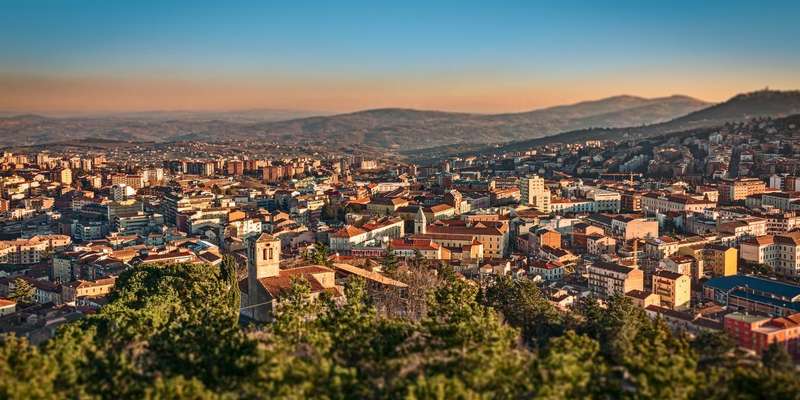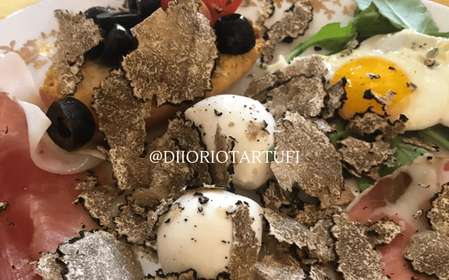- Home
- Useful Tips
- Best neighborhoods in...
Finding the true heartbeat of Campobasso can be challenging for visitors. Most tourists stick to the well-trodden paths around the historic center, missing the vibrant local life that makes this Molise city special. Over 70% of travelers report wanting 'more authentic experiences' in Italy, yet fewer than 20% venture beyond major landmarks. The frustration of feeling like an outsider looking in is real – watching locals enjoy their morning espresso at hidden bars or gather in lively piazzas while you're left navigating crowded tourist spots. This disconnect often leads to missed opportunities to taste genuine Molise cuisine, discover family-run trattorias, or witness the slow-paced Italian lifestyle that makes Campobasso unique. The solution lies in knowing where the locals actually live, work, and relax away from the guidebook highlights.


Why the historic center isn't where locals spend their free time
While Campobasso's centro storico boasts medieval charm with its Castello Monforte and Cathedral, residents typically visit these landmarks only for special occasions. The narrow cobbled streets that enchant tourists become impractical for daily life – limited parking, steep climbs, and few modern amenities make them less desirable for full-time living. Locals prefer neighborhoods that blend convenience with community, where they can run errands, meet friends, and enjoy leisure time without battling tourist crowds. The historic center's transformation into a primarily commercial and administrative zone means many original residents have moved to more functional areas, taking their traditions and favorite eateries with them. Understanding this shift is key to finding where authentic Campobasso life thrives today.
Viale Elena – Where Campobasso's food culture comes alive
The tree-lined Viale Elena district offers the perfect introduction to daily life in Campobasso. This residential area becomes particularly lively during the early evening passeggiata, when families stroll past elegant Liberty-style buildings and stop for aperitivi at unpretentious bars. What makes Viale Elena special are its decades-old alimentari (grocery shops) selling local Molise products like extra virgin olive oil and rare wheat varieties, plus family-run osterias where nonnas still hand-roll cavatelli pasta. Unlike tourist-oriented restaurants, these spots maintain fixed lunch hours when workers and students pop in for affordable daily menus. The weekly farmer's market near Piazza Pepe showcases the region's agricultural bounty, with vendors happy to explain how to prepare obscure ingredients like ventricina sausage or truffles from nearby woods. Staying here puts you within walking distance of both local life and historic sites.
San Giovanni neighborhood – Affordable living with community spirit
For those seeking immersion in Campobasso's working-class roots, San Giovanni delivers authenticity without pretense. This residential quarter developed post-WWII features modest apartment blocks interspersed with surprising Art Nouveau villas, home to multigenerational families who've lived here for decades. The neighborhood's beating heart is Piazza San Giovanni, where elderly men play cards at outdoor tables and kids kick soccer balls until dusk. Unlike more polished districts, San Giovanni's shops cater strictly to locals – think hardware stores, bakeries selling rustic pane di Campobasso, and simple trattorias where €10 buys a hearty plate of pasta e fagioli. The area's unvarnished charm comes alive during summer sagre (food festivals) celebrating everything from wild boar to locally foraged mushrooms. While short on conventional hotels, several converted apartments offer budget stays where you can observe the rhythms of true Molise life.
Villa De Capoa area – Green spaces and local leisure habits
Campobasso's largest public park, Villa De Capoa, anchors a neighborhood that reveals how residents truly relax. The surrounding streets blend 19th-century elegance with modern conveniences, attracting professionals and retirees who favor the area's walkability. Early mornings see locals power-walking the park's shaded paths or practicing tai chi near the neoclassical bandstand, while evenings bring impromptu picnics with regional cheeses and wines. This district excels at under-the-radar food experiences, from pastry shops specializing in caggiunitti (sweet fried ravioli) to enotecas pouring obscure Molise wines. The park itself hosts free summer concerts where entire families gather with folding chairs – a far cry from staged cultural events aimed at tourists. Choosing accommodation here means joining Campobasso's leisure culture while remaining close enough to visit major sights when desired.
